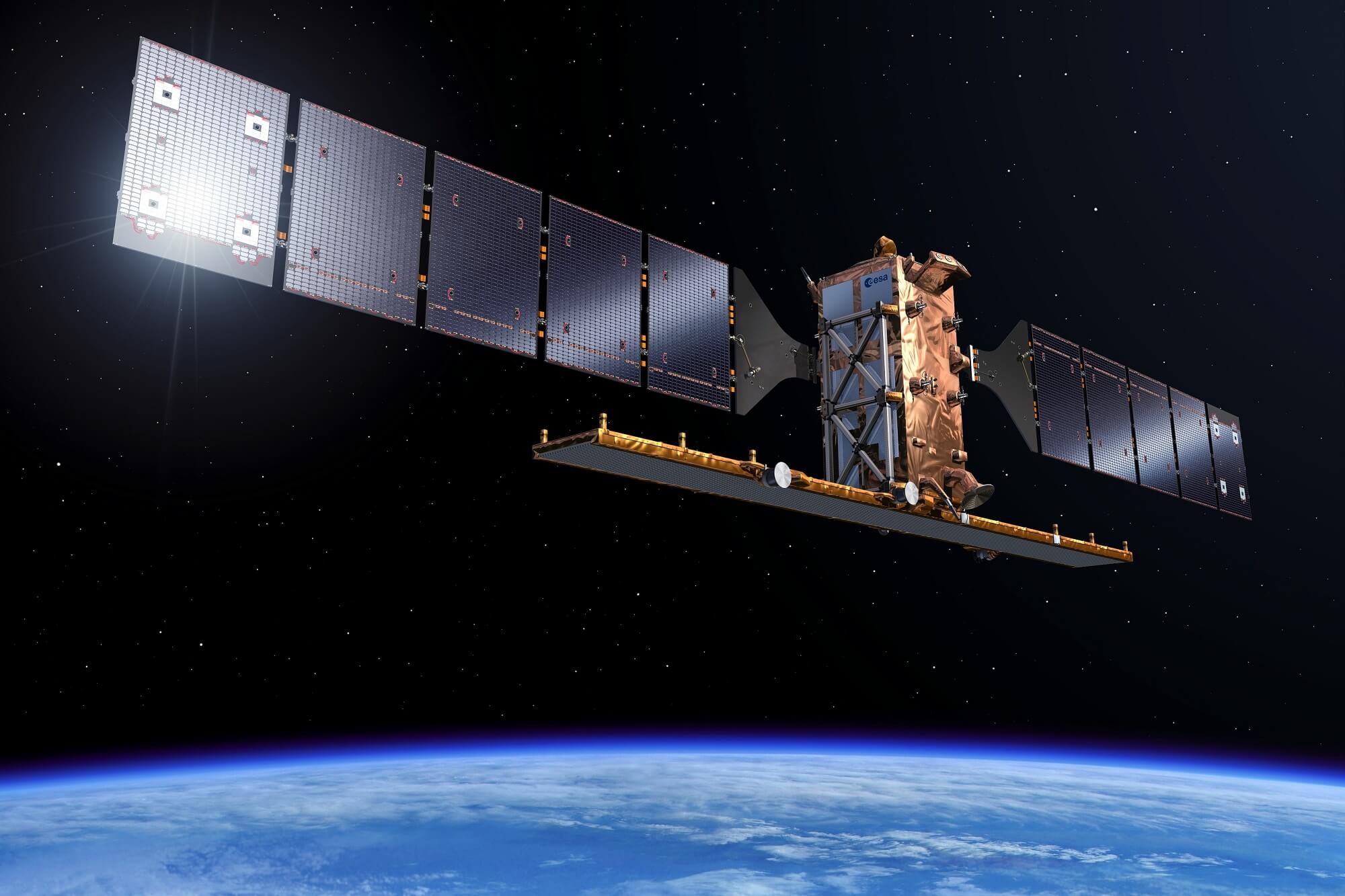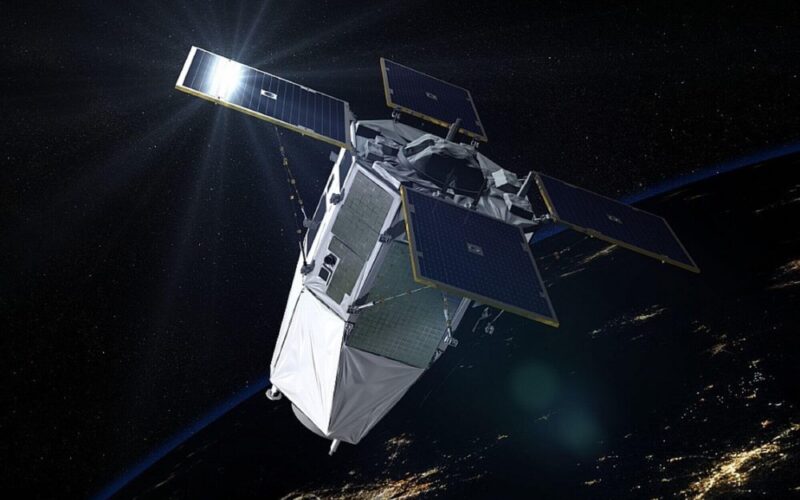The militarization of space, temporarily on hold following the end of the Cold War, is once again a subject of debate. In an increasingly contested environment, and during a time when military and civil operations increasingly depend on space capabilities, global powers arm up and indicate that the Earth’s orbit could be the next battlefield.
The western hegemony in outer space caused by the collapse of the Soviet Union is increasingly being challenged. In April 2021, the US Office of the Director of National Intelligence issued an alert that China was developing several weapons capable of targeting the satellites operated by the US and its allies. “Beijing is working to match or exceed US capabilities in space to gain the military, economic, and prestige benefits that Washington has accrued from space leadership,” the report stated. “Counterspace operations will be integral to potential military campaigns by the PLA [People’s Liberation Army, China’s military – ed. note], and China has counter-space weapons capabilities intended to target US and allied satellites.”
In November 2021, the destruction of an inactive Soviet satellite by Russia alarmed NASA and sent the crew of the International Space Station rushing to safety. “Russia, despite its claims of opposing the weaponization of outer space, is willing to jeopardize the long-term sustainability of outer space and imperil the exploration and use of outer space by all nations through its reckless and irresponsible behavior,” the United States Secretary of State Antony Blinken reacted in a press statement.
In this context, US President Donald Trump signed the Space Policy Directive 4 in 2019, establishing a Space Force as a sixth branch of the US Armed Forces to counter the space capabilities of its “potential adversaries”.
But what about the European Union? If nations of the old continent were to establish a joint space force in the near future, how would it fare against its competitors? AeroTime investigates.
The European Union Space Programme
Defined in 2018 for the 2021-2027 period, the European Union Space Programme clarifies its three main missions as such: Earth observation, navigation, and secure communication. To achieve this, the European Space Agency (ESA) and the EU member states rely on several components.
Earth observation
Launched in 1998, the Global Monitoring for Environment and Security program, since renamed Copernicus, aimed to harmonize the collection and availability of environmental and security data to support the policies of the European Union.
This system regroups a varied constellation of observation satellites from both the ESA and national space agencies, and the purposefully launched Sentinel satellites. The first generation of Sentinel is composed of six different types of spacecraft with varied observation tools and missions. A second generation is being developed to complete the observation capabilities of what is already the world’s largest Earth observation system. More than 15 Sentinel satellites are scheduled to be launched during the 2020s.

The Sentinel-1B satellite (ESA – P. Carril)
Navigation
Shortly after the launch of the US Global Positioning System (GPS) in 1995, the European Union identified the need to deploy its own global satellite navigation and positioning system (GNSS) to reach technological independence. In 1999, the European Commission approved the creation of a European GNSS named GALILEO, after the Italian astronomer Galileo Galilei, discoverer of Jupiter’s satellites.
Following in the footsteps of the GPS and the Russian GLONASS, GALILEO became operational in 2016. To date, 28 Galileo-FOC satellites have been launched from Europe’s Spaceport in Kourou, French Guiana.
The GALILEO system offers a more precise, reliable, and secure system than the GPS, according to the European Space Agency. Among the services offered by GALILEO, the Public Regulated Service (PRS) offers governmental users a higher level of protection against interference such as jamming and spoofing. Thanks to encryption and a more powerful signal, the PRS ensures the continuity of service.
Another important navigation system is the European Geostationary Navigation Overlay Service (EGNOS) which offers improved geolocation and time accuracy compared to existing GNSS, using a network of ground stations and three geostationary satellites. This more precise service allows for critical usage such as improving the safety of aircraft landings in extremely degraded visibility conditions.
Secure communication
To offer European governments access to commercial satellite communication networks, the European Space Agency was tasked with a new initiative called Governmental Satellite Communication (GOVSATCOM). From its launch in 2021 to 2025, the platform will rely on pooling available nationally owned satellites. The first phase will identify the needs of EU governments. If the need for additional capabilities is identified during the implementation phase, more EU-owned satellites may be launched.
The communication system, which includes audio and video communication, will be made available for humanitarian aid responders during natural disasters or search and rescue operations in remote areas. It will also be employed by the military with usages ranging from secure communication with operators in the field to the control of drones and their onboard sensors.
From identifying the threats…
With the acceleration of space militarization, these critical infrastructures need protection sooner rather than later. In 2017, the French Ministry of Armed Forces issued an official protest after a Russian satellite known as Olymp-K was seen tinkering with the Franco-Italian military communication satellite Athena-Fidus.
“What we classically understand by ‘defense’ is evolving to encompass more and more other domains, such as cyber and outer space,” Josep Borrell, Vice-President of the European Commission, said in a blog post calling for a more active space defense policy. “We need to guarantee our ability to operate securely and constantly the infrastructures essential to our societies, including against threats in outer space.”
To mitigate the risks of damage caused by an accidental collision or even willful interference, the European Union established a support framework for space surveillance and the tracking of objects in orbit in 2014.
Ground-based sensors, ranging from telescopes to radars and laser-ranging stations, and space-based sensors of seven EU member states, namely France, Germany, Italy, Poland, Portugal, Romania, and Spain, have since been regrouped under a Space Surveillance and Tracking (SST) Consortium, in cooperation with the EU Satellite Centre (SatCen) agency.
In 2021, the EU SST sensors collected around 300,000 measurements per day. These measurements are used to provide three services: predicting potential collision between spacecraft or with debris, monitoring in-orbit fragmentations, break-ups or collisions, and giving a risk assessment of uncontrolled re-entry of spacecraft into the Earth’s atmosphere.
With about 44 ground-based sensors currently active, the network is undergoing constant expansion to offer the highest level of coverage possible.
“EU SST aims at having full coverage of the GEO and MEO regions for objects larger than 35 centimeters by 2023,” the consortium explains. “For the LEO region, EU SST aims at covering almost 100% of objects larger than 50 centimeters and approximately 20% of the objects larger than 7 centimeters.”
… to countering them
The concerns voiced by the United States are echoed on the other side of the Atlantic. In January 2019, two members of the French Parliament issued a report in which they warned of emerging threats to France’s space assets.
“We must forego all naivety: the weaponization of space is already a fact, and those who today campaign for non-weaponization treaties are sometimes the first to have weaponized space,” one of the MPs commented at the time.
Six months later, ahead of the July 14 national celebrations, President of France Emmanuel Macron announced the creation of a space command within the French Air Force, which was re-established as the Air and Space Force. In addition, a new operational center was built in Toulouse, bringing together its Satellite Observation Military Center (CMOS), and the Operational Center for Military Surveillance of Space Objects (COSMOS), unique in Europe, which constantly monitors over 10,000 space objects in orbit.
In March 2021, the French Space Command (CDE) held the AsterX military exercise in space, the first of its kind in Europe. The goal was to understand the future needs of the CDE, assess the current capacity to protect space assets, and monitor an increasingly contested territory.
In this exercise, the French Armed Forces were joined by the German Space Situational Awareness Centre in Uedem, which monitors objects orbiting around space using the GESTRA and TIRA radar systems.
In July 2021, Germany followed in France’s footsteps and created the Bundeswehr Space Command, also based in Uedem. 80 service members from the Luftwaffe, the German Air Force, monitor and protect the current and future satellites used in the fields of telecommunications and observation.
Throughout the years, the two space commands were joined by other space organizations, such as the Italian Space Operations Command. These all actively participate in the initiatives of the EU Space Programme.
But their ambitions go beyond the simple monitoring of threats. On both sides of the Rhine, the US Space Force’s elusive Boeing X-37 space drone stirred envy. While its exact mission remains a secret, the drone’s ability to navigate in low orbit and perform orbital maneuvers would make it a great asset for repairing allied satellites or countering enemy threats.
Shortly after the creation of its space command, the German Defense Ministry awarded the local start-up Polaris a €250,000 contract to study the application of its Aurora spaceplane for reconnaissance missions.
While the French authorities have not made any similar initiative official yet, the CEO of Dassault Aviation Eric Trappier has been advocating for the development of a “space plane”. In the past decade, the French company has been studying several concepts to operate in low orbit, such as the Airborne Reusable Hypersonic Vehicle (VEHRA).
Italy is also active in the domain. After the success of ESA’s Intermediate eXperimental Vehicle (IXV), which completed a 100-minute suborbital space flight in February 2015, the Italian branch of Thales Alenia Space took leadership of a new project, Space Rider. The small space shuttle, capable of taking microgravity experiments into space and bringing the results back to the Earth’s surface, is scheduled to conduct its first flight in 2023.

